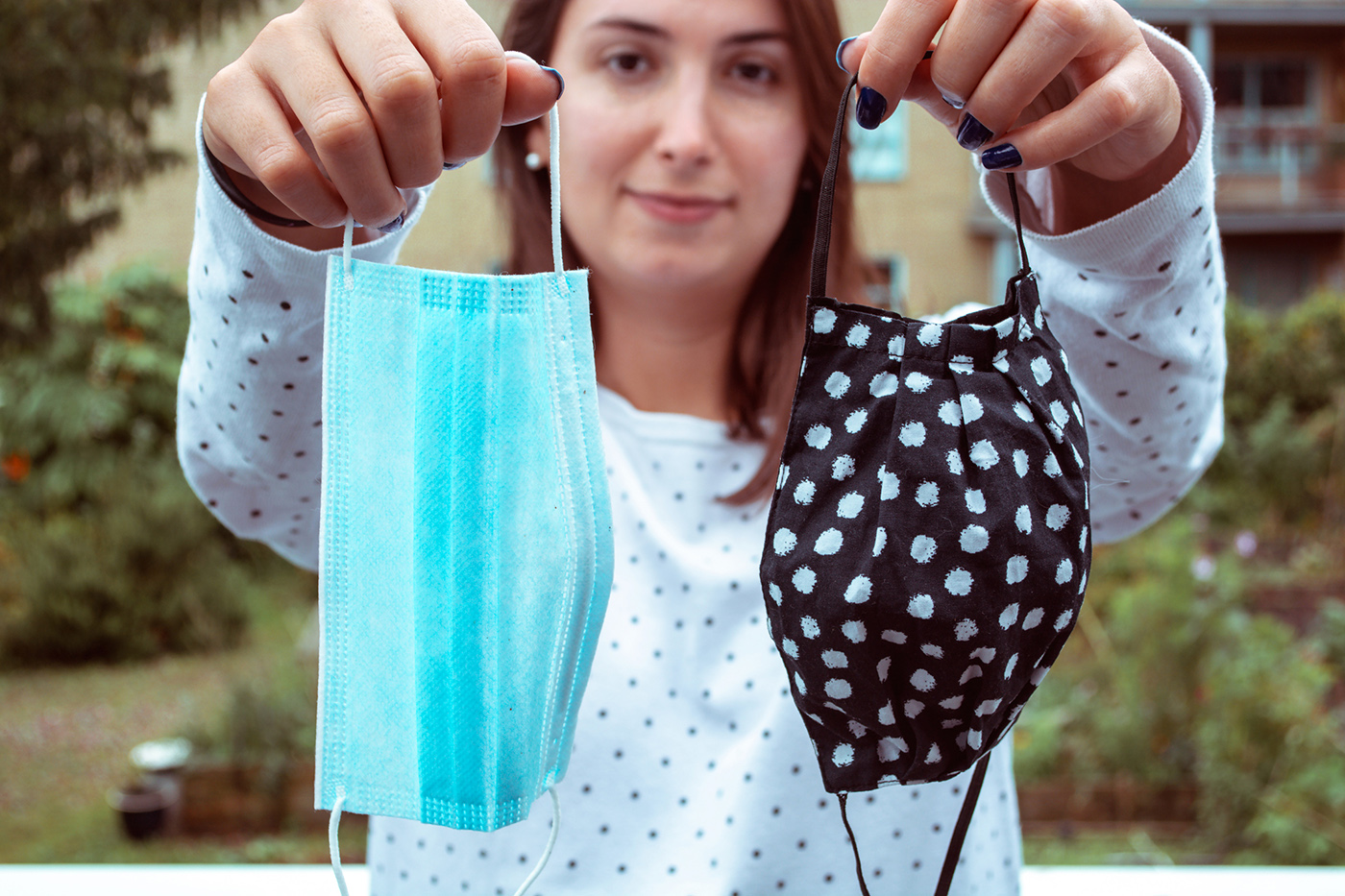Breadcrumb
COVID Q&A: Is it time to begin double-masking?
Published on February 8, 2021

As COVID-19 vaccination efforts continue in Iowa and across the nation, emerging variants of the coronavirus present new public health challenges. Renee Anthony, professor of occupational and environmental health in the University of Iowa College of Public Health, offers updated advice to protect against transmission of the virus, including the practice of double-masking as well as other masking tips and reminders.
Q: Lately, there’s been increased attention about double-masking as a way of enhancing protection against coronavirus transmission. Why are some public health officials now recommending double-masking?
A: Given the mutated form of the SARS-CoV-2 virus—which may be more infective and perhaps more deadly—and its presence in our communities, some are recommending double-masking to reduce transmission of the virus. This can be accomplished by adding a cloth mask over a disposable form-fitting respirator or over a surgical mask.
Q: How exactly does double-masking improve protection?
A: Double-masking adds additional layers of filtration, which gives more opportunities to collect an infectious particle as we breathe through all layers of face coverings. Double-masking may also help reduce gaps between the mask and your face, which is critical to reduce virus transmission. However, I caution people to not add too many layers—at some point, it may be too thick to breathe through all the layers.
Another benefit to double-masking is that the outside mask may prevent contamination of a purchased mask with a tight fit, helping the wearer to use it for longer durations. If we touch our mask with potentially contaminated hands, we would be touching the outer cloth layer, which could be laundered.
Q: With the spread of more infectious variants, should people be upgrading to an N95 mask, which is the gold standard for filtering infectious particles?
A: As most people know, access to N95 respirators is limited. What people may not know is that without being fit-tested, it is impossible to know if the seal of these masks is adequate to prevent particles from bypassing the mask material. These N95s come in different sizes, meant to fit different face sizes. Any gaps in the seal of these masks allow air to carry particles from a room into the mouth and nose of the wearer.
It is also important to note that there are other international approval guides for “N95” type respirators. Many countries have their own certification bodies, so if you want to purchase a respirator for COVID protection from other countries, check these approvals and what they mean.
Q: What’s the current guidance on the effectiveness of cloth face coverings?
A: Cloth face coverings vary in their ability to filter particles out of the air with even greater uncertainty than N95 respirators. Using at least two layers of tightly woven fabric in cloth face coverings is recommended. Alternatively, disposable non-woven surgical-style masks are available for use, although many of these have unknown filtering ability as well.
Regardless of the style and material, the importance of the fit of the face covering cannot be overstated. If there are gaps, when you inhale, particles are not filtered by the face covering, and any infectious particles can be breathed in by the wearer through these gaps. Combining different styles of masks and different strap configurations will maximize the combined fit when double-masking.
Q: Recently, some people have been turning to KN95 and KP95 masks, which purport to offer better filtration than cloth face coverings. What do people need to know about these types of masks and how they perform?
A: It is important to understand that the China KN/KP certification process is not rigorous, and these masks should be treated as if they are a “disposable mask” and not a real respirator. Companies have been testing these for use in workplaces throughout the pandemic and have seen almost none of them passing filtration tests.
In addition, double-masking with two form-fitting KN95 or N95 covers will not improve the “fit” issue that double-masking with a cloth mask over a disposable mask might provide.
Q: What do you tell people who say they’re tired or distrustful of new prevention recommendations, particularly because “expert advice” on mask wearing and other precautions has changed throughout the pandemic?
A: I understand everyone’s weariness about public health precautions. But as we learn about the mutated strain, confirmed in the U.S. and in our own communities, we must remain vigilant. The standard public health recommendations of hand washing, maintaining physical distance to others not in our immediate households, and staying home when feeling symptomatic are still necessary. So, too, is the use of face coverings over the mouth and nose when outside the home.
Vaccination opportunities are on the horizon, but until we have sufficient herd immunity, masking up and doing it well remains a critical public health tool during the pandemic.
Public health guidance continues to be revised as we learn more about the virus, as well as risks and benefits of behaviors and material performance, but the goal has always been the same: Stop the spread of this virus so we can get back to doing things that make life enjoyable and give our health care workers a break.
Masking 101: Signs that you have a leak and what to do about it
- If your glasses fog up when wearing masks, you do not have a good seal at the bridge of your nose. Select face covers with a moldable strip at the nose, typically metal, to mold the mask to your face.
- If you have gaps at the side of your face, near the straps, particles will bypass the filter material and enter the space inside your mask, which could then be inhaled. This video demonstrates how to adjust the ear straps to minimize this gap.
- If the mask doesn’t cover your nose, you are not protected and risk exposing others to the virus if you are infectious but don’t know it. Cover the mouth and nose together.